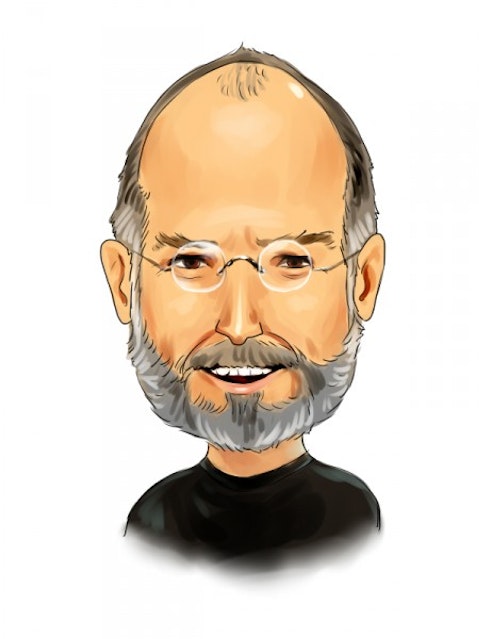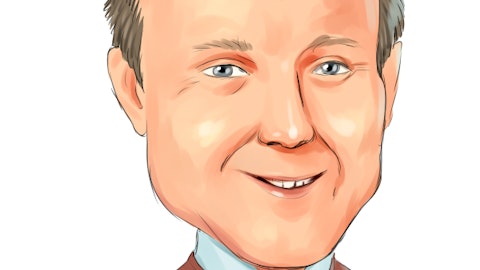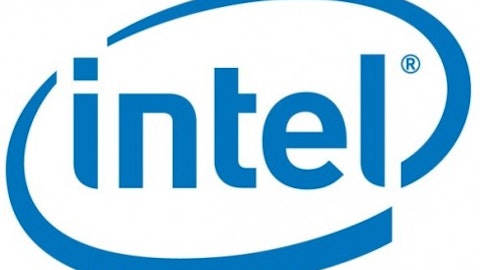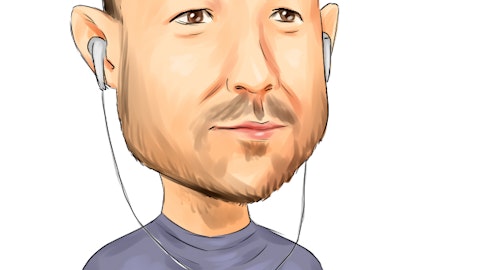 Apple Inc. (NASDAQ:AAPL) has a monster of a problem.
Apple Inc. (NASDAQ:AAPL) has a monster of a problem.
The maker of iPhones and iPads has roughly $137 billion of cash on its balance sheet. On paper, that looks like $137,000,000,000 — or more than the gross domestic product of Ecuador.
That doesn’t even count the money the company is raking in this quarter. It’s just the cash it has sitting in the bank right now.
This might seem like a nice problem to have… After all, an ample cash reserve is important for independence and security. But having too much cash, especially at current record-low interest rates, may be crippling Apple’s ability to grow.
For the better part of the last decade, Apple Inc. (NASDAQ:AAPL) was a model of innovation and financial performance. The company enjoyed a track record of introducing sleek, game-changing products and services, including the iPod and iTunes. But it wasn’t always a smooth ride for Apple Inc. (NASDAQ:AAPL).
In 1997, Apple was in deep financial trouble. The company brought back its visionary founder Steve Jobs. But Jobs alone couldn’t save Apple… he needed money. The only way Apple could save itself was to grovel before its arch rival Microsoft Corporation (NASDAQ:MSFT) and borrow $150 million.
Apple never wanted to be put in that position again, so it adopted a corporate culture of hoarding cash. Apple continued to fight its old demon long after the company had plenty of money. And now Apple Inc. (NASDAQ:AAPL) has created a monster drag on its potential growth.
But what does Apple’s problem have to do with you?
The chances are good that you created the same monster. And now it is dragging down your retirement plan’s growth.
Investors were rightly horrified by the market’s collapse in late 2008 and early 2009.
Most realized all too late the importance of maintaining an adequate cash balance. But just like Apple Inc. (NASDAQ:AAPL) in the aftermath of its financial crisis, investors appear to be overcompensating. In the three years that followed the market crash, the growth in U.S. savings deposits puts Apple Inc. (NASDAQ:AAPL)’s cash war chest to shame.
The desire for security is understandable. But keeping too much cash on the sidelines earning an average 0.6% interest rate in the short term can jeopardize retirement security in the long term.
Even when investors realize this, they are still unwilling to take on the market’s volatility and/or believe the market may stagnate. But there is a strategy that could help investors ease back into the market and achieve better growth with less volatility…
Most investors believe that to achieve growth, they must own aggressive securities or be in on what my colleague Andy Obermueller calls “The Next Big Thing.” But there is a tried-and-true investment strategy that provides a gentler path to growth. By reinvesting the dividends from safer — even boring — securities, investors can create a less volatile portfolio without sacrificing growth.
For instance, if you invested $10,000 in a stock with a yield of 5% and automatically reinvested the dividends, then in 10 years’ time, your investment would be worth $16,289. That 62.9% return assumes the stock never appreciates a single penny.
Of course, that’s how it works in theory. How does it work in the real world? So far, even better…
Concerned by the growing number of investors sitting in cash, I launched a real-world, dividend reinvestment experiment called The Daily Paycheck. In December 2009, I started with $200,000 in cash and slowly invested it in carefully selected dividend-paying securities. I set up my brokerage account to automatically reinvest the dividends. Since its inception, my portfolio has gained 38.9%, slightly outpacing the S&P 500 Index with 42% less volatility.
Everyone knows the market is risky. But what few people — and even some companies like Apple Inc. (NASDAQ:AAPL) — fail to realize, is the long-term risk of sitting on too much low-yielding cash. Even at the current rate of inflation in the United States, money sitting in a low-interest checking or savings account will be worth less next year than it is worth this year.
And imagine if the rate of inflation shot up?
To put it plainly, you’ve got to let your money grow in order to retire comfortably.
Action to Take –> If you’ve been sitting out on the sidelines, then dividend reinvestment is a good way to ease yourself back in the game. Consider running your own real-world dividend reinvestment experiment. Start slowly. Pick one or two stable dividend-paying securities and watch the growth that even a few months of dividend reinvestment can deliver. And if you want to know more about my dividend reinvestment strategy, then go here.
Warren Buffett’s Top 5 Stocks Buffett’s firm, Berkshire Hathaway, holds dozens of stocks. But these five make up 75% of its portfolio… worth $65 billion. Click here to get Buffett’s top 5 stocks plus his 16 latest buys, FREE.
.







